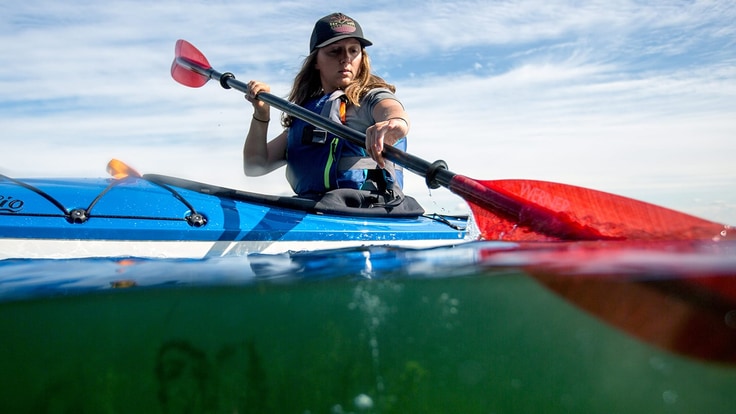The beauty of flatwater kayaking is the freedom to explore anywhere on a body of water. The key to proper adventuring then, is the ability to control your craft. By learning a few strokes—the ones presented here—you can paddle efficiently and end up exactly where you intend to go. We'll cover the basics of how to paddle your kayak:
- How to grip your paddle for an efficient stroke
- The forward stroke for—you guessed it—going forward
- The reverse stroke for slowing down and backing up
- The sweep stroke for turning
- The draw stroke for scooting your kayak sideways
If your kayak has a rudder or a skeg, leave it out of the water as you practice. Your goal is to learn how to track straight and turn based solely on stroke technique. It's best to practice these strokes in a calm, safe environment until they're second nature.
It's wise to learn proper technique from an experienced guide or instructor. All of this attention to detail might seem a bit much until you consider how many paddle strokes you'll be doing. Bad form can wear you out in a hurry.
How to Hold Your Paddle
Holding your paddle correctly is key to having an efficient, nonfatiguing stroke. You should also have a paddle that's the correct length for you. If you're not sure about yours, ask your guide or paddle shop, or read How to Choose a Kayak Paddle.
Holding a paddle the right way involves four things:
- Knowing what type of paddle blades you have
- Orienting the blades properly
- Adjusting where you grip the shaft
- Relaxing your hands on the paddle shaft
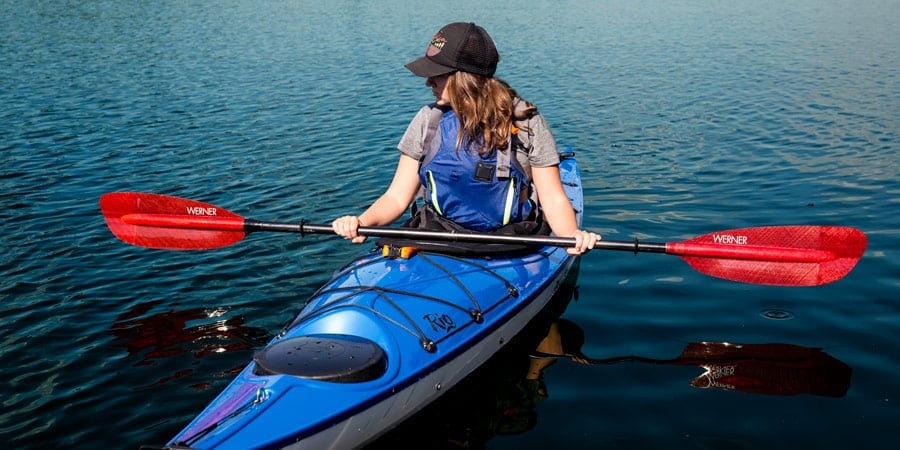
1. Know Your Paddle Blades
- Are the blades matched (parallel) or feathered (at an angle to one another)? It's easier to learn with matched blades. If yours are feathered, look at the shaft's center for a push-button and holes circling the shaft. Press the button and rotate the two shaft halves until the blades are parallel.
- Are the blades asymmetrical? The answer is "yes" if one side of each blade is a little shorter than the other. (This can be subtle, so look closely.) This shape helps the paddle track straight (not spin) as you pull it through the water. If you see a uniform oval instead, then you have "symmetrical" blades. You can learn to paddle with either blade type—you just need to know which you have.
- Are the blades slightly concave (curved)? The answer is typically "yes," so pay attention to where that concave side faces when you grip the shaft. This shape lets you "grab" more water for a more powerful stroke.
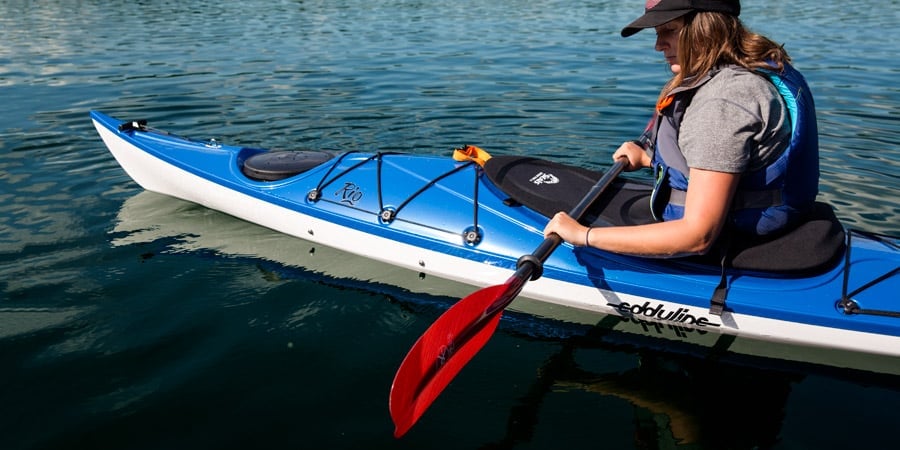
2. Orient Your Paddle Blades
Pick up the paddle, hold it in front of you and check three things:
- You want your large knuckles pointed up and your blades perpendicular to the surface of the ground.
- You want the shorter side of each blade on the bottom. (Not a concern if you have symmetrical blades.)
- You want the concave side of each blade facing you. (Not a concern if you have completely flat blades.)
If you didn't grab the paddle exactly this way, simply flip it around until your hands and the blades are oriented the way you want.
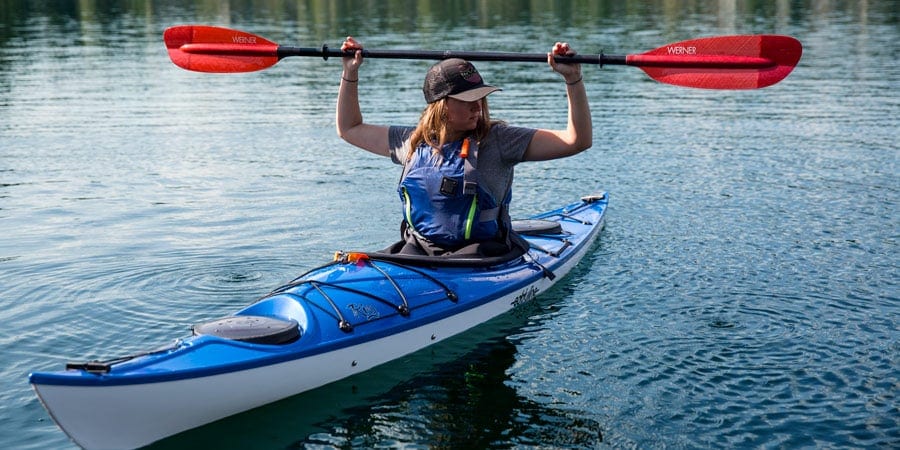
3. Adjust Where You Hold the Shaft
- Rest the paddle shaft's centerpoint on your head.
- Now readjust your grip along the shaft so that your elbows are at a 90-degree angle.
When you bring the paddle down in front of you, you'll have "the paddler's box," a shape formed by the shaft, your arms and chest. Maintaining that box as you stroke helps you rotate your torso correctly, another key to good technique.
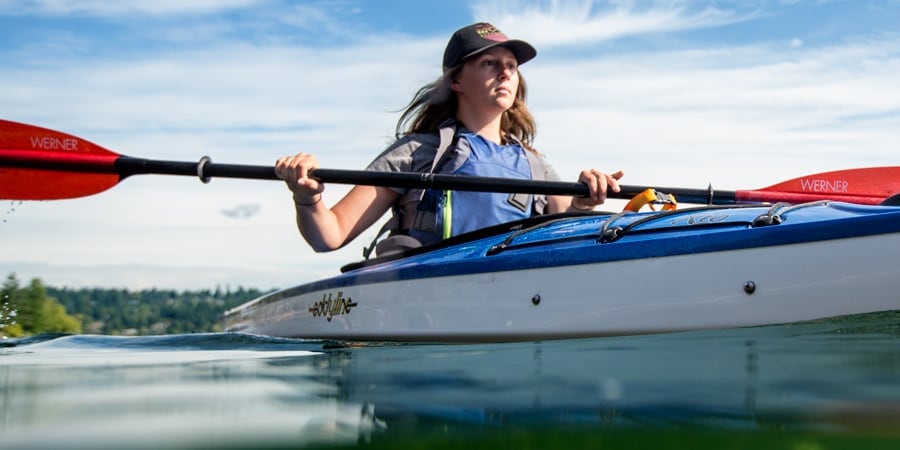
4. Relax Your Grip
A relaxed grip helps prevent your arms, wrists and hands from becoming fatigued. It also reminds you to rely on your torso instead to power your paddle:
- Make an "O" around the shaft with your index finger and thumb.
- Then rest your other fingers lightly on the shaft.
Forward Stroke
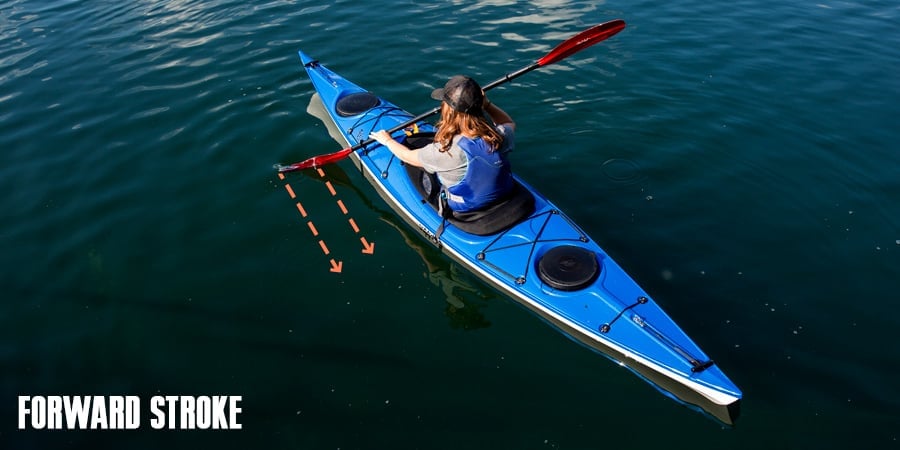
Paddling's most fundamental stroke, the one you will spend most of your time doing, involves more than arm power. It's important to engage your stronger torso muscles (core and back) to do most of the work.
Double-check how you're holding the paddle. Now you're ready for the three phases of the forward stroke:
- The catch phase: Wind your torso and immerse your blade fully on one side of the boat next to your feet.
- The power phase: Rotate your torso as the blade moves behind you. Follow the in-water blade with your eyes and your torso will follow. Focus, too, on pushing against the shaft with your upper hand as you move.
- The release phase: When your hand reaches just behind your hip, "slice" the blade out of the water.
To repeat, you simply immerse the out-of-water blade next to your feet. (Your torso will already be wound correctly.)
Technique Tips:
- Focus on using your strong core muscles to power your stroke rather than the weaker muscles of your arms. Your muscles will tire quickly if you're not using proper technique. You'll also be more prone to injury.
- Maintain the blade in a near-vertical orientation and at a consistent (full) level of immersion. You'll track straighter and move faster.
- Keep as upright as possible. You'll maintain balance and gain efficiency.
- Think about the paddler's box throughout the stroke. That helps align your body correctly for every phase of the stroke.
Reverse Stroke
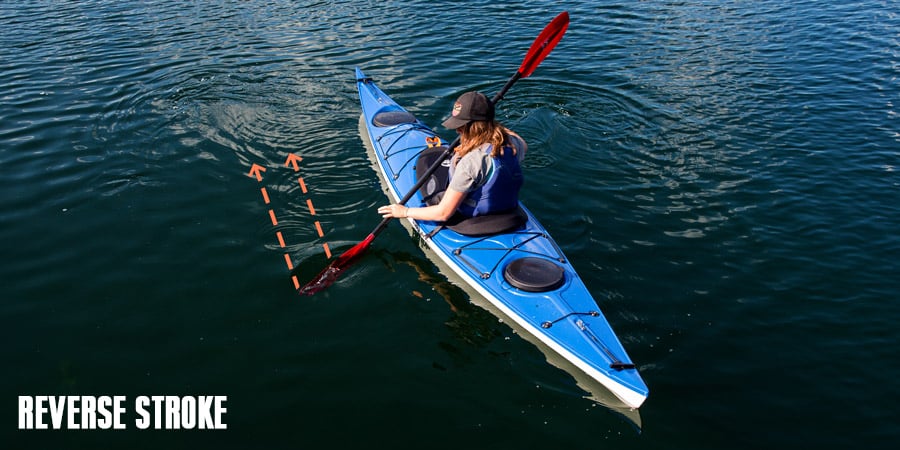
Braking a moving kayak can be done with the reverse stroke. If you're stopped, then the reverse stroke can be used to back up. The stroke is the exact opposite of the forward stroke:
- The drop phase: Wind your torso and immerse your blade fully on the side of the boat next to your hip.
- The power phase: Rotate your torso as the blade moves in front of you.
- The release phase: When your paddle blade is even with your feet, "slice" the blade out of the water.
To repeat, simply immerse the out-of-water blade on the opposite side of the boat next to your hip. (Your torso will already be wound correctly.)
Sweep Stroke
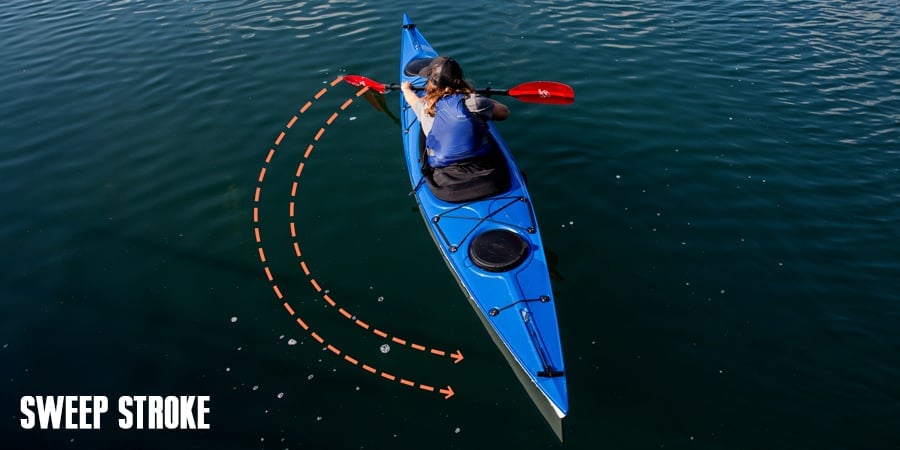
If you repeatedly do the forward stroke on the same side of the boat, you'll notice the boat slowly turning in the opposite direction. Doing the sweep stroke on the side of the boat is a more efficient way to turn the boat.
- The catch phase: Extend your arms forward and immerse the blade near your feet to begin your sweep. Begin on the opposite side of the boat from the direction you want to turn
- The turn phase: Sweep the blade in a wide arc toward the stern of the boat. Put some power into your body's rotation to optimize the stroke, especially after the paddle has passed the cockpit.
- The release phase: When the blade approaches the hull behind your cockpit, finish the stroke by slicing the blade out of the water.
The result should be a gradual arcing turn with little loss of momentum. You can repeat the sweep stroke if needed, or resume your forward stroke.
Technique Tip:
A wide sweep is important, so picture the hands of a clock in the water and try to touch all of the clock numbers along your arc.
Draw Stroke
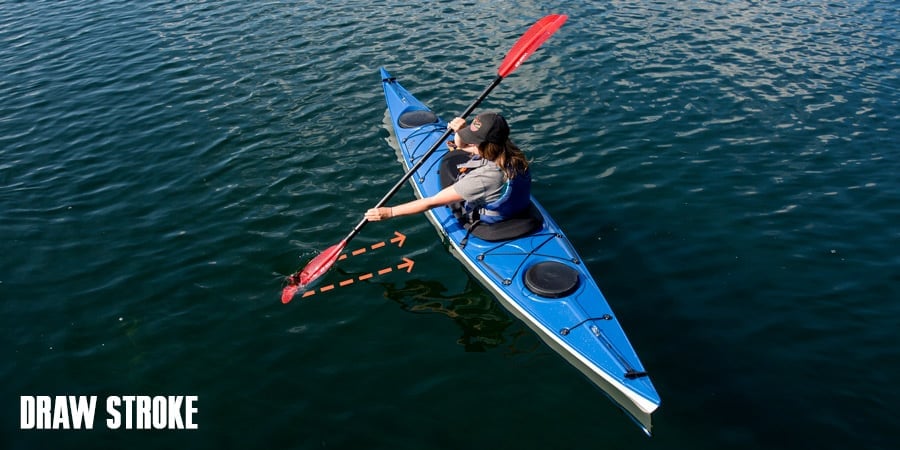
Draw strokes are used to move your boat sideways. This stroke is useful if you need to pull close to a dock or another boat:
- Rotate your paddle blade so it's horizontal.
- Reach out with the tip of the blade to touch the water about two feet away, directly on the side of your boat. (Your paddle shaft should be angled steeply.)
- Use your lower hand to pull the blade straight toward you, keeping the tip of the blade immersed in the water during the stroke.
- Stop before the blade hits the side of the boat.
Typically, several draw strokes are needed, so you can repeat the stroke:
- Rotate the blade 90 degrees, then slice it out of the water sideways.
- Repeat steps 1 through 4 above.
Safety Tip:
If the paddle does hit the side of your boat, don't try to pry the blade out of the water because you can tip your boat and capsize. If you feel it hit, simply let go of your top hand or relax your body and start over. Don't pry—retry.
